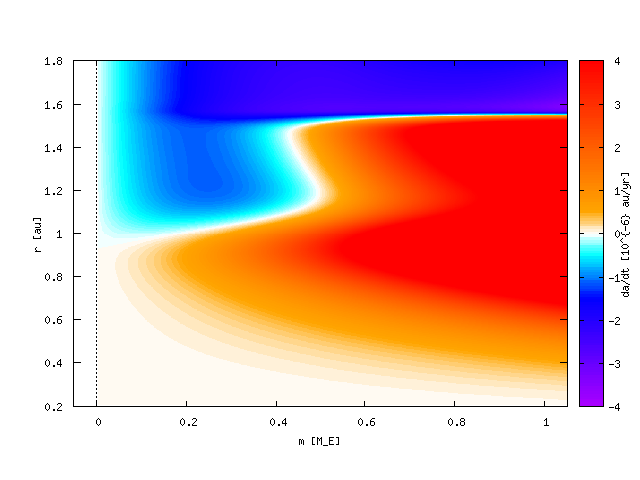


See fargo_terr_20210112.pdf, figs_20210112.pdf, supplement_20210112.pdf, response.txt.
viscosity value:
| low ν (0.3 times nominal) | nominal ν = 1.1e14 cm^2 s^-1 | high ν (3.0) | |
| da/dt(m,r) |  |
 |
 |
vicosity slope (in r < 1 au region):
| low s1 (-1.0) | nominal s1 (-2.0) | high s1 (-3.0) | |
| da/dt(m,r) |  |
 |
 |
Note: ν(r) = ν0 (r/1 au)s, s = s1 + (s2 - s1) {1-tanh[(1 au-r)/(0.15 au)]}/2, s2 = +0.5.
| nominal Mars-size | Mercury-size | |
| m(a) | 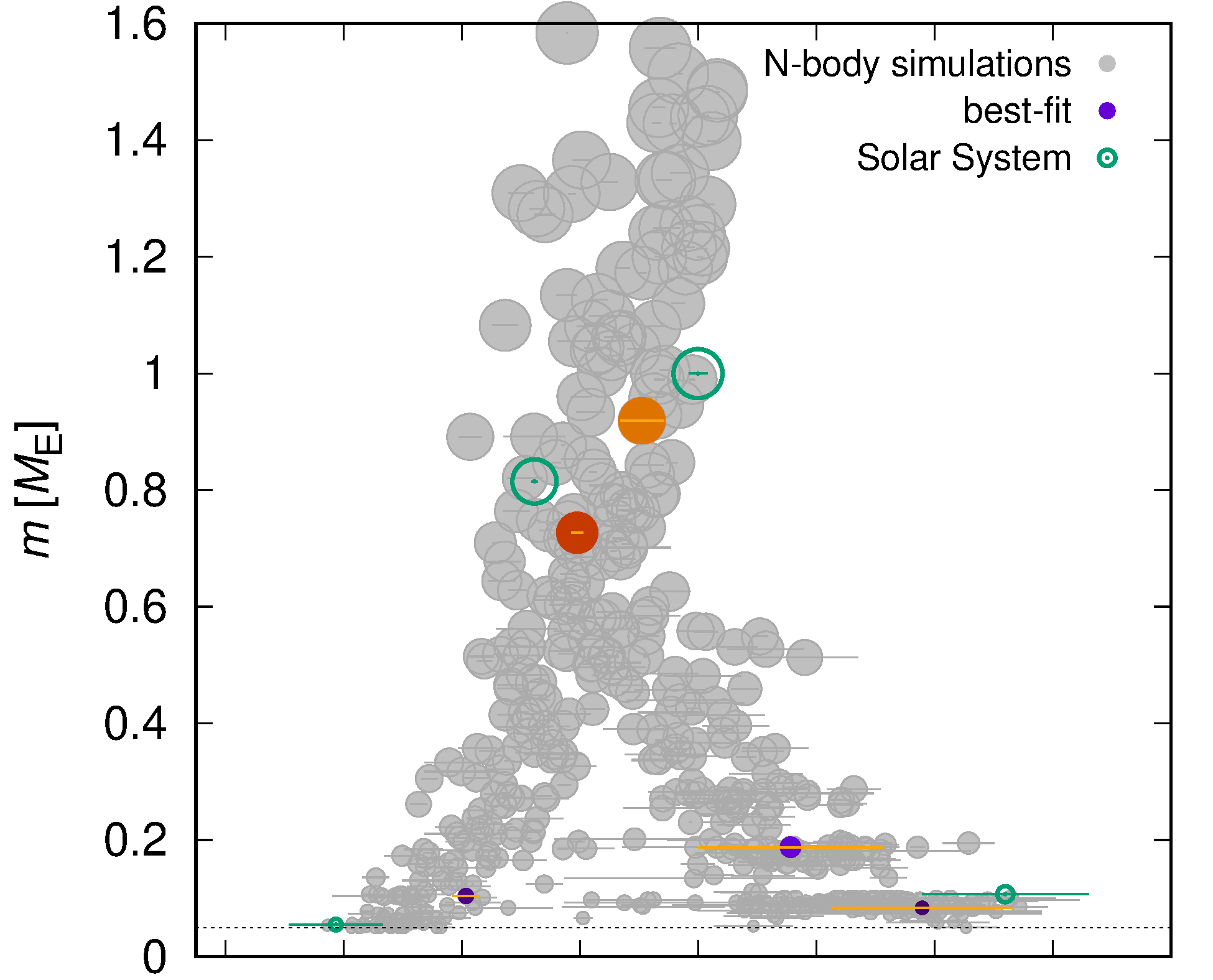 |
 |
| t(a) | 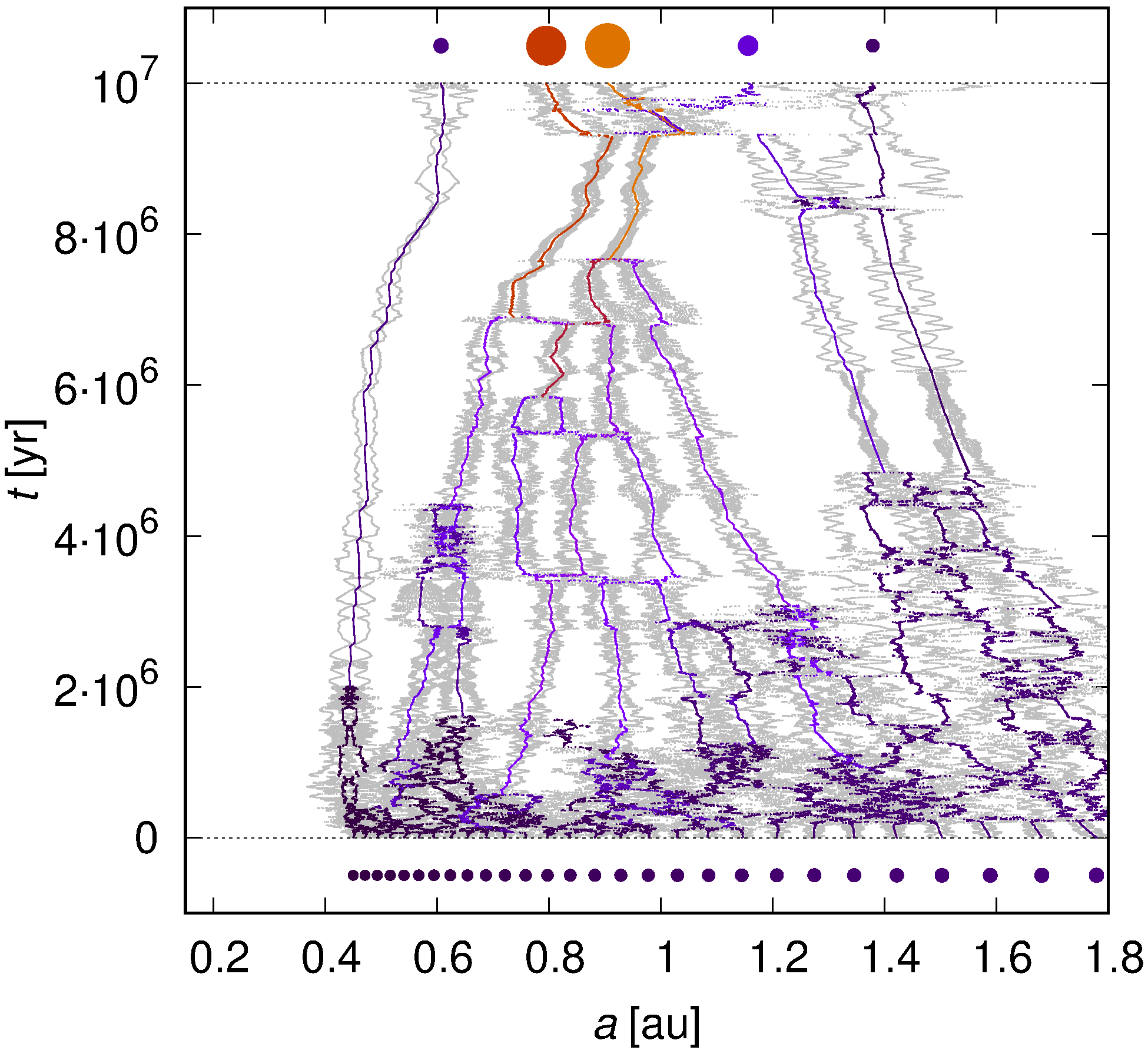 |
 |
| N_sim(N_pl) | 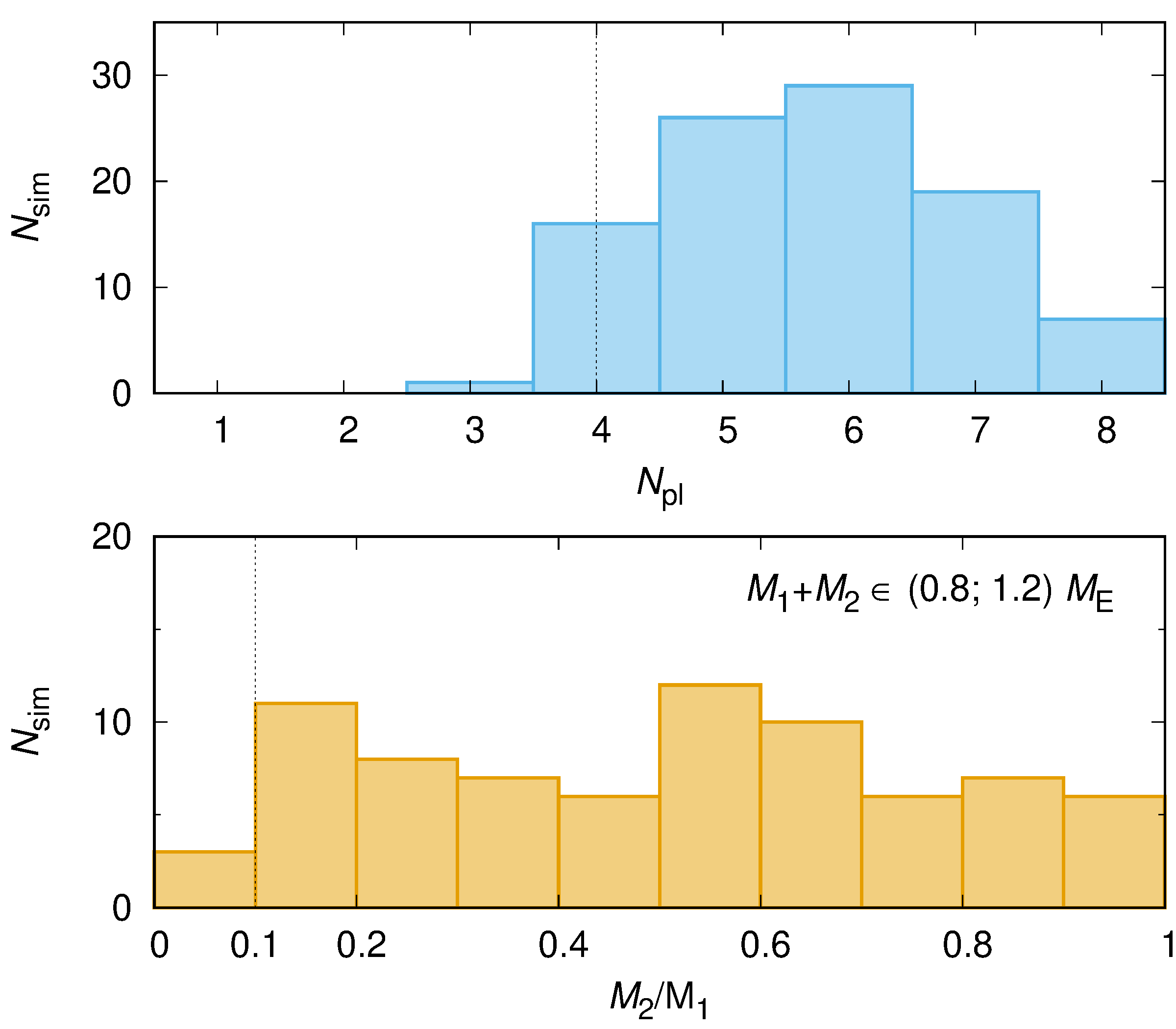 |
 |
Size-period relation from Petigura etal. (2013), Fig. 1:
Infrared excess vs. cluster age from Fedele etal. (2010), Fig. 4 and other works:
a(t) plots for sets of 50 (or 100) simulations:
| dM_p/dt = 2e-5 M_E/yr | 2e-6 M_E/yr | 2e-7 M_E/yr | |
| M_tot = 2 M_E, Mercury- to Mars-size |
 |
 |
 |
| 2 M_E, lunar-size |
 |
||
| 1 M_E, Mercury- to Mars-size |
 |
||
| 1 M_E, lunar-size |
 |
||
| 0.1 M_E, lunar-size |
 |
a(m) for the same sets:
| dM_p/dt = 2e-5 M_E/yr | 2e-6 M_E/yr | 2e-7 M_E/yr | |
| M_tot = 2 M_E, Mercury- to Mars-size |
 |
 |
 |
| overgrowth! | |||
| 2 M_E, lunar-size |
 |
||
| not finished! | |||
| 1 M_E, Mercury- to Mars-size |
 |
||
| 1 M_E, lunar-size |
 |
||
| 0.1 M_E, lunar-size |
 |
||
| overgrowth! See 3 Myr. |
Nsim(Npl) for the same sets:
| dM_p/dt = 2e-5 M_E/yr | 2e-6 M_E/yr | 2e-7 M_E/yr | |
| M_tot = 2 M_E, Mercury- to Mars-size |
 |
 |
 |
| 2 M_E, lunar-size |
 |
||
| 1 M_E, Mercury- to Mars-size |
 |
||
| 1 M_E, lunar-size |
 |
||
| 0.1 M_E, lunar-size |
 |
| nominal without Jupiter | with Jupiter at 5.2 au | with migrating Jupiter (to 2.5 au) | |
| m(a) | 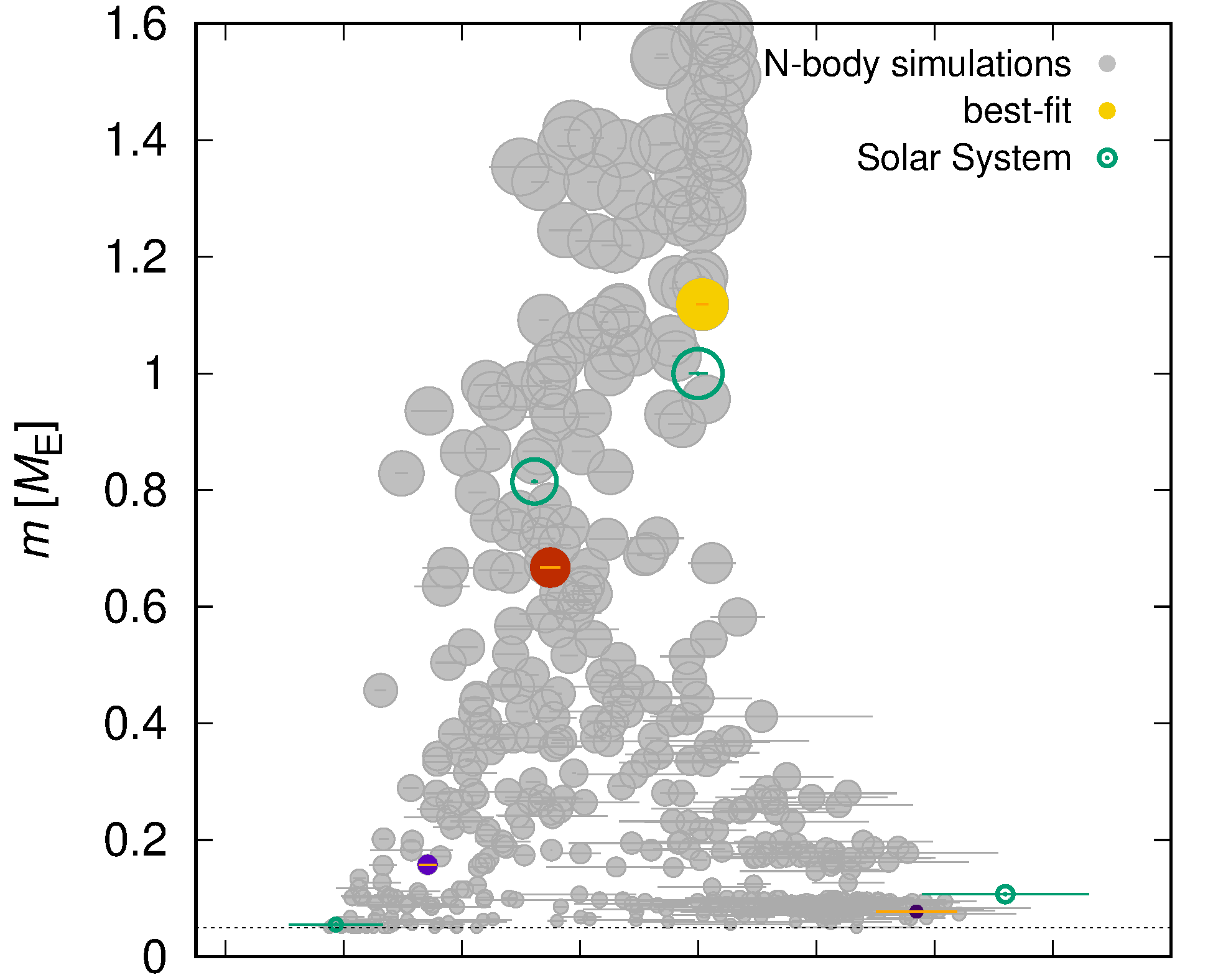 |
 |
 |
| t(a) | 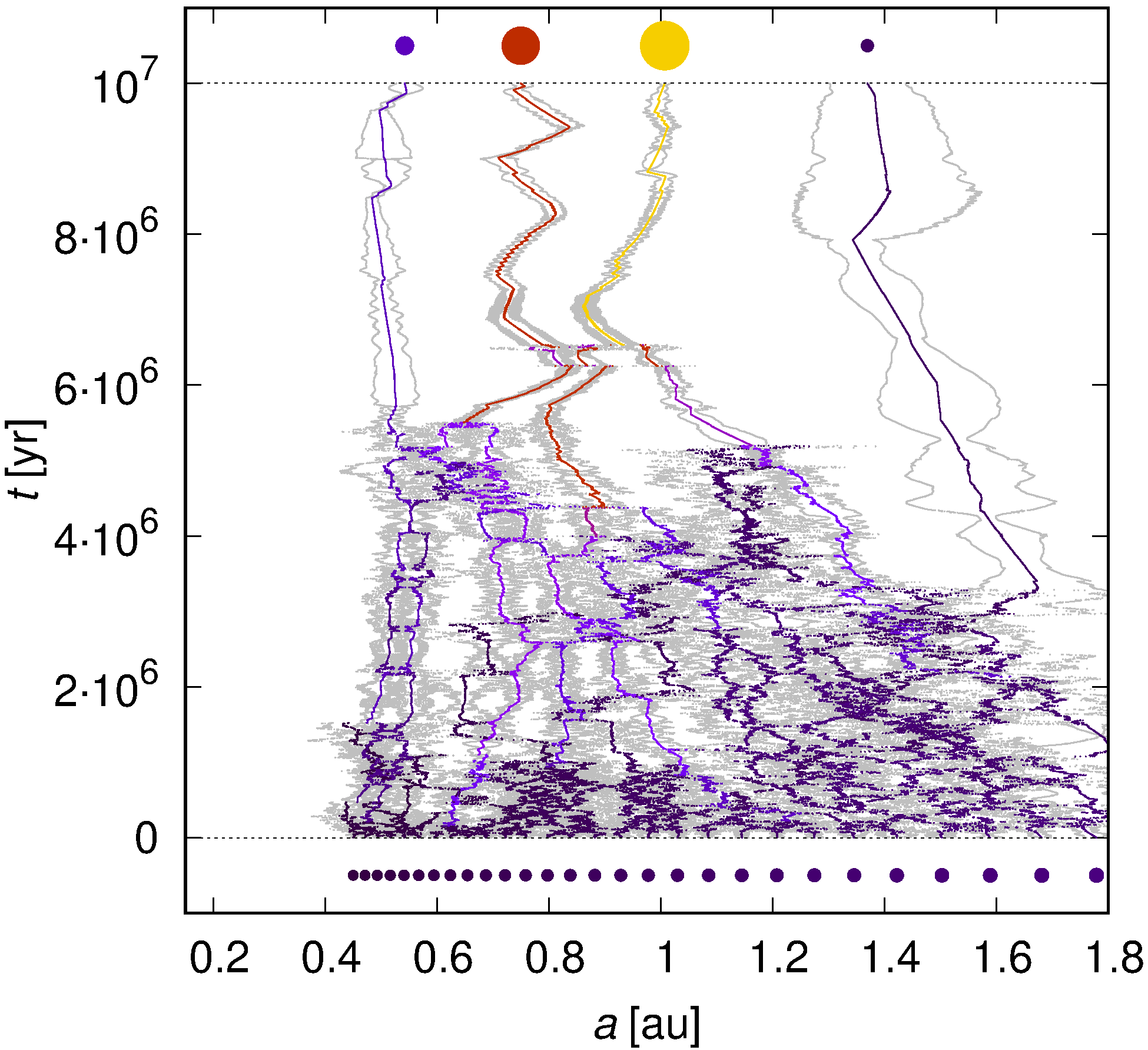 |
 |
 |
| N_sim(N_pl) |  |
 |
 |
| nominal constant | exponential decay (τ = 5 Myr) | long-term evolution | |
| m(a) |  |
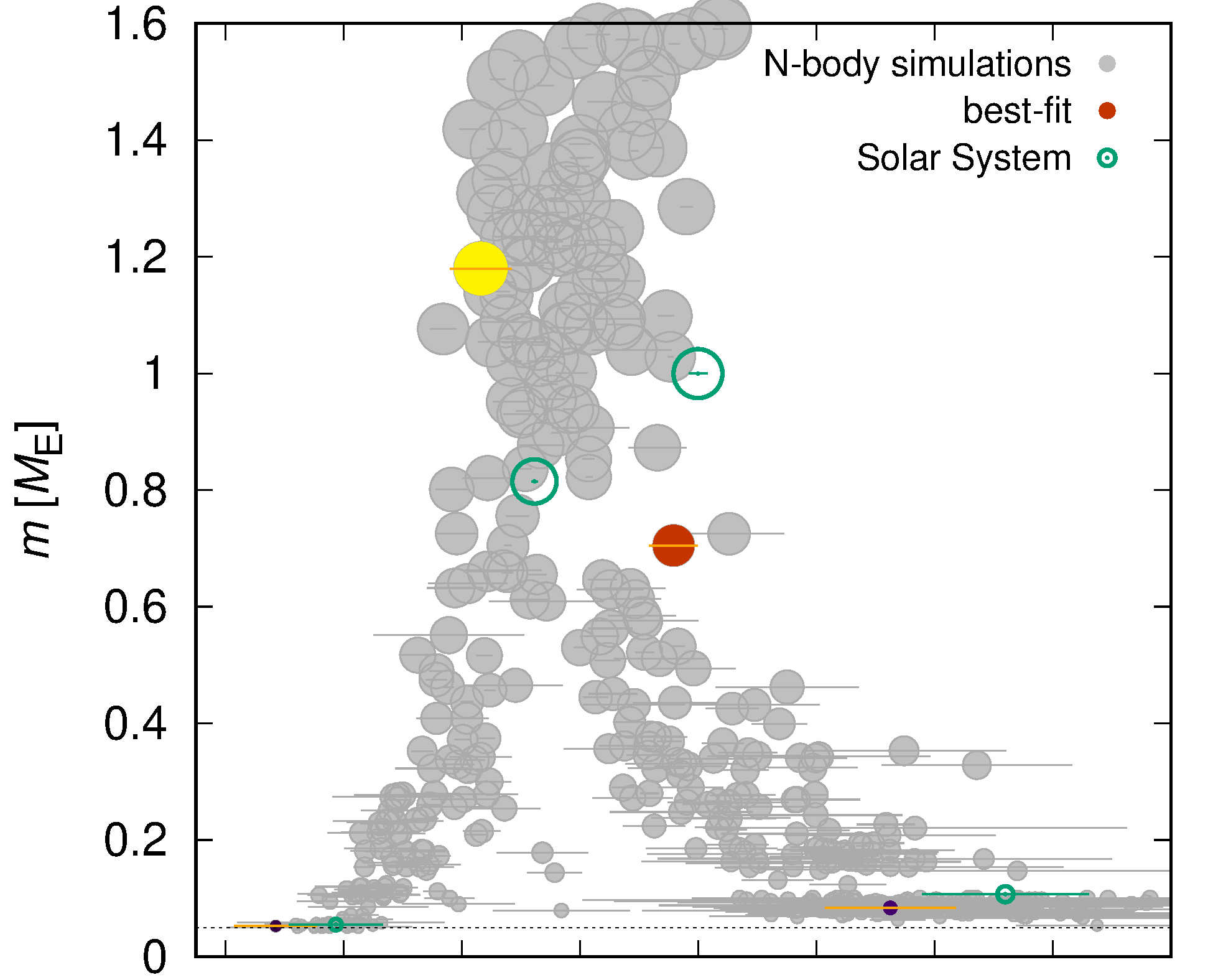 |
 |
| t(a) |  |
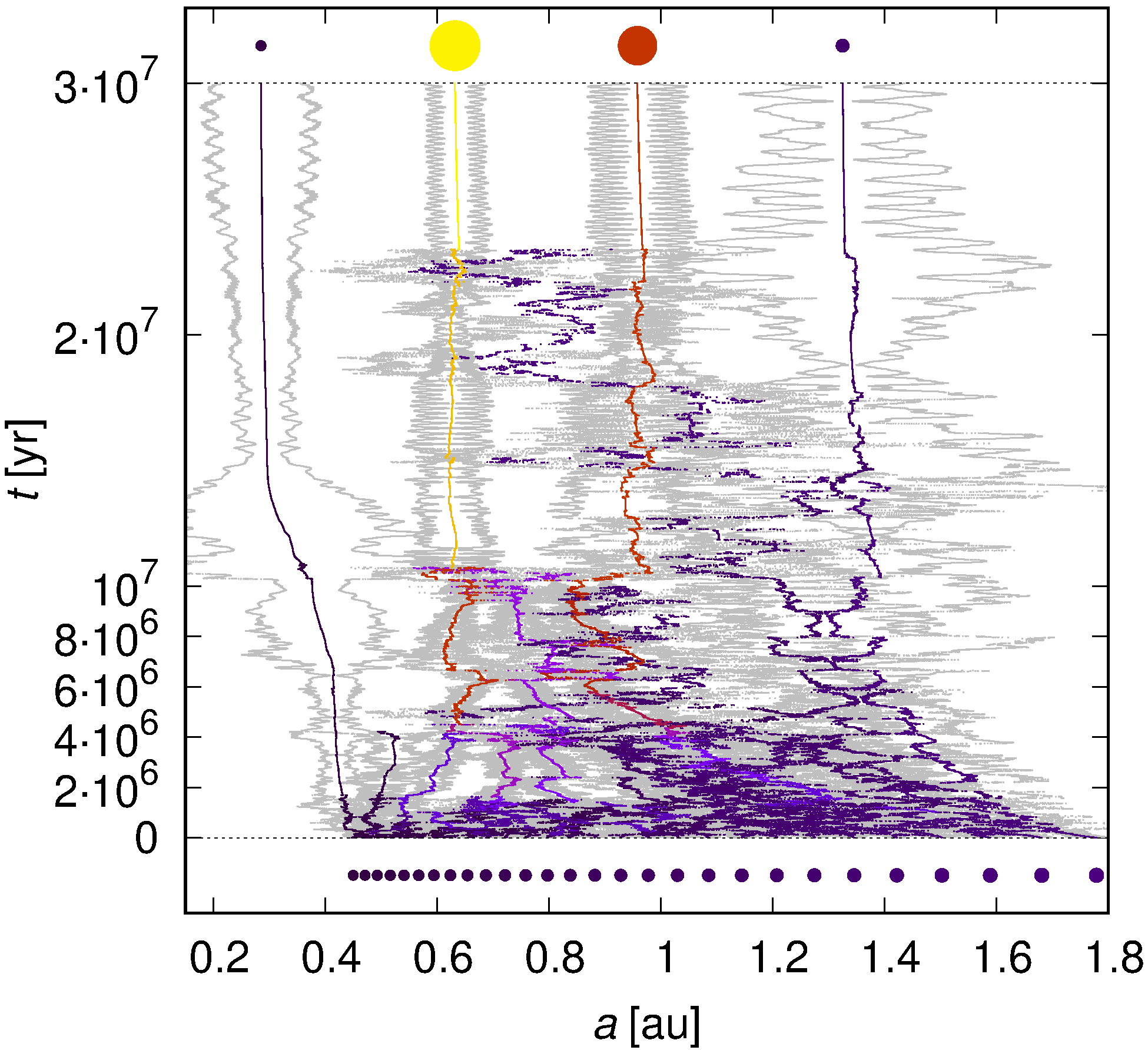 |
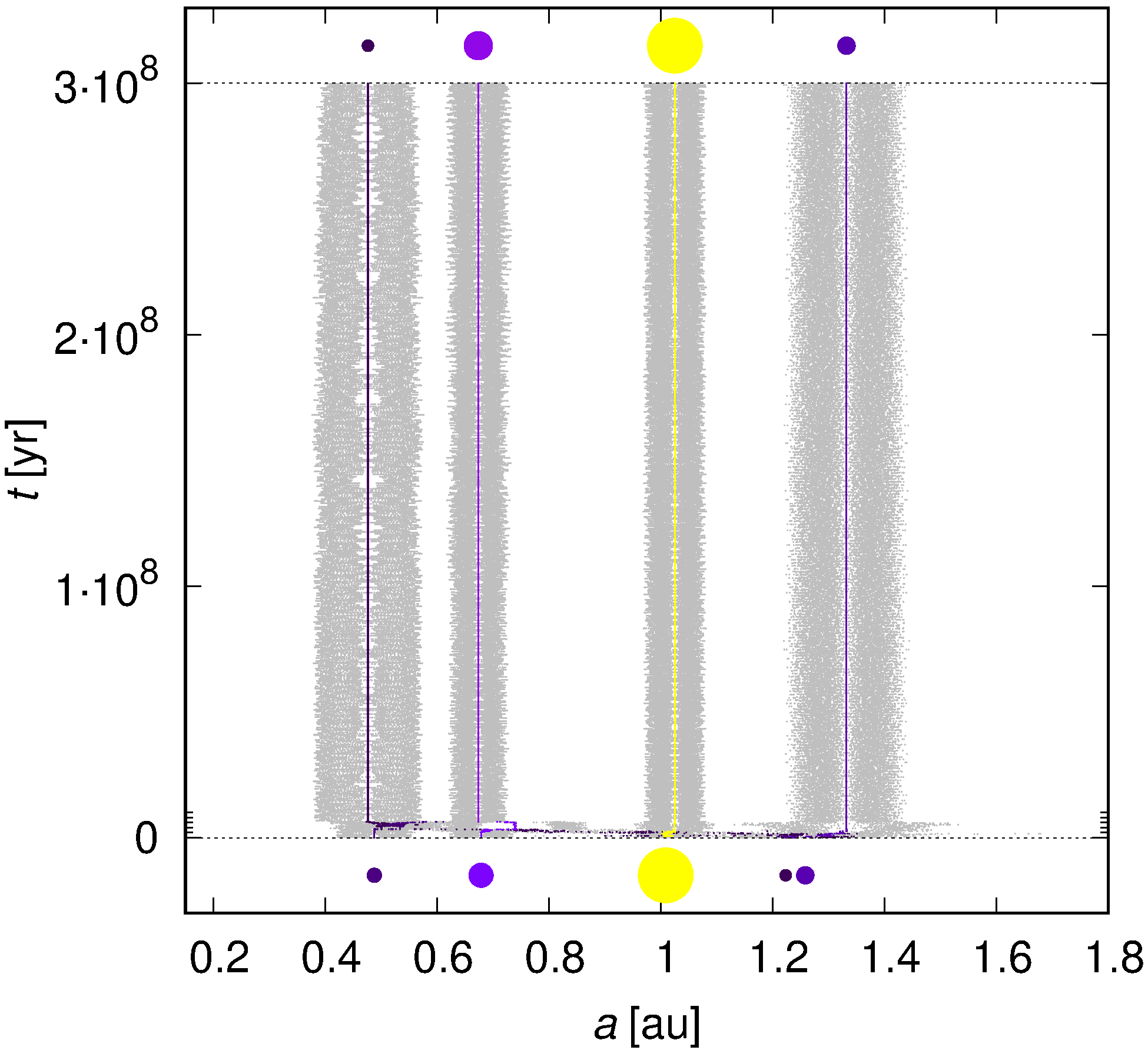 |
| N_sim(N_pl) |  |
 |
 |
| N_col(t) | 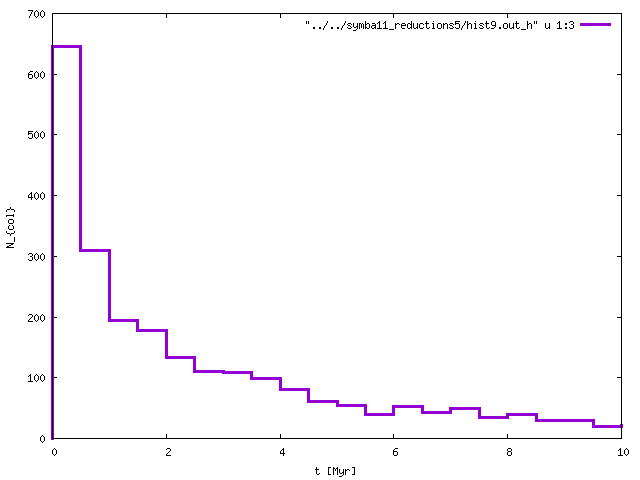 |
 |
 |
More complicated giant planet migration (Sandro etal. in prep.); namely scenario "1" from Roig etal. (2016):
Condensation sequence for the solar composition (Asplund et al. 2009) and an increased abundance of Fe (10 times; red line). The concentrations n (per litre units) of various solid phases and their dependence of decreasing temperature T are shown. A preliminary computation performed by the ArCCoS code (Unterborn and Panero 2017).
Potassium on terrestrial bodies from Nittler etal. (2018), Fig. 2.3:
Potassium on terrestrial bodies from Dauphas etal. (in prep.):